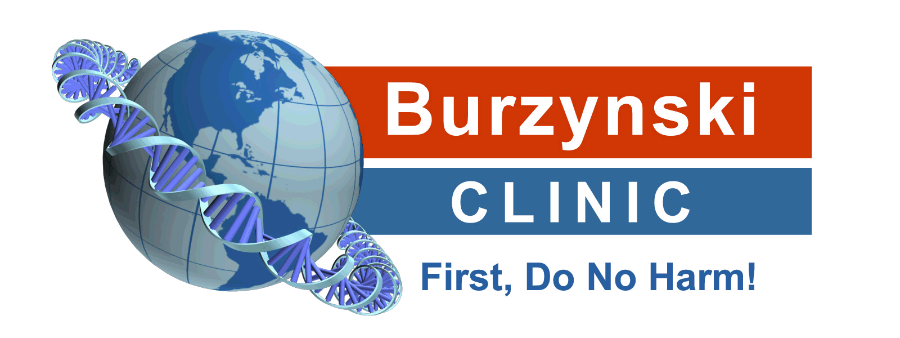Phase II Study: Antineoplastons in Pediatric Brain Tumors | Burzynski Clinic
Friday, July 18, 2025 | By: Burzynski Clinic
Did you know that about 4,000 children in the U.S. are diagnosed with brain tumors each year? This staggering statistic highlights an urgent need for innovative treatment options, particularly in the realm of pediatric oncology. As parents look for effective therapies, the Phase II study of Antineoplastons A10 and AS2-1 opens new doors of hope for young patients battling brain tumors.
In this blog post, we will unpack the findings from Protocol BT-10, addressing the significant implications of Antineoplaston therapy for children with brain tumors. You will learn what Antineoplastons are, how they work, their impact as seen in clinical trials, and why this treatment offers a promising pathway for families facing the arduous journey of cancer treatment.
Understanding Pediatric Brain Tumors
Pediatric brain tumors represent the most common solid tumors in children, encompassing diverse types originating from different brain cells. Common examples include gliomas, medulloblastomas, and ependymomas. These tumors can significantly alter a child’s life, affecting their development, communication, and quality of life. The treatment landscape for pediatric brain tumors often involves surgery, radiation therapy, and chemotherapy, but these conventional approaches can have severe side effects.
The Urgent Need for New Treatments
While existing therapies aim to combat cancer effectively, they do not always guarantee favorable outcomes. The landscape of pediatric oncology demands exploration of alternatives that minimize harm while maximizing effectiveness—an approach actively pursued by the Burzynski Clinic in Houston, TX. Traditional treatments often yield high rates of morbidity and mortality, prompting the need for innovative approaches like Antineoplastons.
Enter Antineoplastons
Developed by Dr. Burzynski, Antineoplastons are a unique class of compounds derived from natural substances in the body, primarily produced by the human body. These compounds are designed to modulate the body’s cellular processes and are believed to inhibit the growth of cancer cells without harming healthy tissue. Antineoplaston therapy aims to harness these properties for therapeutic use, representing a significant evolution in cancer treatment.
The Science Behind Antineoplaston Therapy
Antineoplaston therapy works by affecting the proteins in cancer cells that influence cellular growth and proliferation. In the Phase II study, the combination of Antineoplastons A10 and AS2-1 was administered to pediatric patients with brain tumors, leading to outcomes worthy of exploration.
Clinical Trial Overview
The Phase II study, named Protocol BT-10, focused on evaluating the safety, tolerability, and effectiveness of Antineoplaston therapy in children diagnosed with brain tumors. Throughout the study, Burzynski Clinic researchers collected data on several key outcomes, including:
- Tumor response rates
- Patient survival rates
- Quality of life assessments
- Serious adverse events reported
Promising Outcomes from Protocol BT-10
Despite the challenges faced in clinical trials, the results from Protocol BT-10 have been both promising and encouraging. The findings indicated that:
- Many children exhibited a partial or complete regression of their tumors.
- Patients reported an enhancement in their overall quality of life during treatment.
- Antineoplaston therapy was generally well tolerated, with manageable side effects.
These results have vast implications, particularly when considering the parameters for pediatric patients enduring treatment with high levels of toxicity—a common narrative when it comes to traditional oncologic therapies.
Addressing Concerns and Misconceptions
While the results of the trial are encouraging, it is essential to address common concerns and misconceptions surrounding Antineoplaston therapy:
- Efficacy: Some skeptics question the effectiveness of Antineoplastons, pointing to the need for more extensive studies. However, the promising results from early trials underscore their potential as viable treatments.
- Safety: Safety is a top priority in pediatric oncology. The BT-10 trial demonstrated that Antineoplastons had manageable side effects, contrasting sharply with the toxicity associated with traditional therapies.
Why This Matters for Families
For families facing the unthinkable diagnosis of a brain tumor in a child, the exploration of Antineoplaston therapy offers hope. Parents are often compelled to seek alternative treatment options, especially when conventional methodologies lead to challenging side effects without guaranteed efficacy. This therapy can serve as a potential solution, integrating innovative science with compassionate care, aimed solely at improving the lives of young patients.
Success Stories: Real-Life Impacts
Numerous anecdotal reports from families highlight the transformative potential of Antineoplaston therapy:
- Many children who underwent treatment reported significant therapeutic benefits, including reduced tumor size and improved quality of life.
- Parents noted increased energy levels and cognitive enhancement in their children post-treatment.
These accounts emphasize the therapy's relevance and capacity to change lives.
The Future of Pediatric Oncology
As more studies evaluate Antineoplaston therapy, the question arises: What does the future hold?
- More Research: Continuous research is vital to building a comprehensive understanding of how Antineoplastons can fit into the larger context of cancer treatment protocols for children.
- Collaboration: Collaboration between research institutions, clinics, and families will also be crucial in pushing the boundaries of pediatric cancer therapies.
What Can You Do?
If you are a family navigating this challenging journey, staying informed is key. Consider exploring all treatment options, including promising clinical trials like Protocol BT-10, with your child’s care team. Dr. Burzynski and the expert team at the Burzynski Clinic in Houston, TX offer advanced treatment options and clinical trial opportunities that may provide additional hope. Remember, every step forward—no matter how small—empowers families to advocate for the best possible outcomes and brighter futures for their loved ones.

